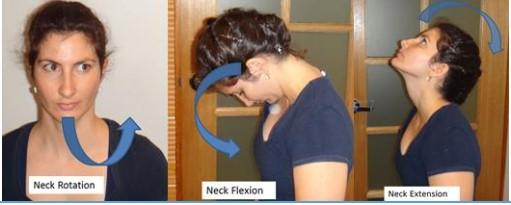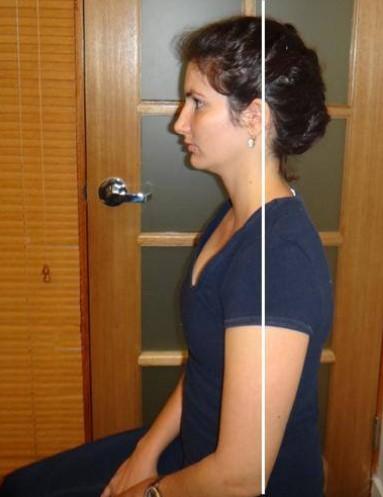What is Whiplash?
Whiplash is the term used to describe a range of neck injuries, caused by a sudden distortion of the neck.
It is often associated with velocity induced neck extension although there is no one specific movement which is the sole cause for whiplash.
The most common form of whiplash injury is from a motor vehicle accident, however, it can be caused via any sudden movement of the head (including sporting injuries, falls etc).
Whiplash describes the motion of the head often going backwards then forwards and often backwards again. The force involved and the speed of the movement can cause damage to joints and ligaments of the neck. Research has shown that there are two main areas that are damaged – the upper neck (C2-3) and the lower (C5-6).
What are the symptoms of Whiplash?
Symptoms of whiplash can occur straight after the accident or even over the next few days. These symptoms include;
- Neck pain
- Neck stiffness
- Headaches
- Dizziness
- Shoulder pain
- Numbness
- Mid back pain
- Weakness and many more

Whiplash is diagnosed via a subjective history which takes into account any recent trauma suffered and the resulting symptoms reported. Radiological imaging which can show damage to the structures of the neck and surrounding region are warranted with signs of nerve injury.
As discussed, often Whiplash symptoms will not show straight away and can take days to present themselves. For example, someone in a car crash will likely walk away and feel fine, however, the following day will likely wake with some form of neck stiffness or a headache etc.
If you feel you have signs of Whiplash, then see your GP who can document the injury which is important for claiming treatment costs from a third party which we will discuss below.
Then see the team of specialists at All Care Physiotherapy in Brisbane who can start the appropriate neck pain treatment to get you on the road to recovery.
What can you do to overcome Whiplash?
Tip 1: Stay active
The single best piece of advice for a whiplash injury we can give is to stay active. Unfortunately, by not moving, you are likely going to worsen the stiffness and swelling in the region.
Staying active is important in whiplash management and as long as what you’re doing is not worsening your pain, then you are safe to do that! The best way is to monitor your symptoms while starting the activity and gently increase as you can. Increased pain does not normally mean increased tissue damage – pain relief in the early stage along with anti-inflammatories are useful in controlling pain. Your GP can prescribe these.
Tip 2: Have treatment with a neck pain physiotherapist
Neck pain treatment has been proven to help with the symptoms of whiplash. Treatment consists of gentle manual therapy at first, progressing to stronger treatment as you progress. Along with this, a graded education and exercise program will be provided to stretch out the joints and strengthen up the muscles to support the injured region.
Other great treatment tools we use are postural taping which helps stabilise your posture and decreases the load on your neck and upper back, leading to pain reduction and tips on how to minimise stress on the spinal joints.
Tip 3: Follow the exercises prescribed by your physio for maximum recovery
Improvement post-injury is a process of settling symptoms while improving the strength of the surrounding muscles to support the spine. Like rehab after a sporting injury, this process takes time and can consist of home exercises as well as work in our rehab studio.
Three exercises to help straight away post-whiplash
Gentle exercises are important to maintain the range of your spine and start the gentle strengthening of the muscles.

Exercise 1: Chin Tucks in a Sitting Position
- Tuck chin in as if nodding “yes”
- Don’t push this movement too far, only to get a stretch, not pain
- Hold for 5 seconds and remember to breathe throughout
- Repeat several times a day
Exercise 2: Gentle Range of Movement
- Very gently, look up/down and left/right without pushing into pain
- It should be a very light stretch, don’t push past that stretching sensation
- Hold each movement for 2 seconds and return to neutral
- Perform 10 times in each direction


Exercise 3: Postural Correction
While in a sitting position, gently pull your shoulders back and squeeze your shoulder blades together while sitting up tall through the top of your head.
- Don’t push into any pain, just push until you feel a stretch
- Hold for 3 seconds and perform 10 times
- Repeat several times a day
Do you know that you are covered for treatment costs if it is not your fault?
If you have been involved in a motor vehicle accident and you were not at fault, then you are covered under CTP insurance. The biggest error people make after a motor vehicle accident is not seeking help because it felt fine at the time of the accident.
The safest way to deal with a whiplash injury is to seek medical attention straight away, by seeing your local GP. Your GP can assess you for any serious injuries, determine if you need a scan and begin your CTP claim.
Your GP needs to fill out the initial paperwork to start a third party CTP claim.
Companies like Suncorp and RACQ are responsible for the costs of your rehabilitation if a motor vehicle accident is not your fault. The CTP fee you pay with the registration of a car covers this (the driver at fault’s CTP insurer is liable for your rehabilitation).
Some insurance companies will ask questions about the validity of your claim if you wait days/weeks to seek medical attention. By going to your GP early, you are ensuring that any nasty underlying symptoms are not missed, while also covering yourself from a legal point and rehab point of view.
Paperwork is lodged into the CTP insurer who will accept the claim and pay for treatment.
Contact All Care Physiotherapy today to start treating the symptoms of whiplash
All Care Physiotherapy is your expert Brisbane Physiotherapist. We care about you, and so we’re open extended hours and across lunchtimes so that you can make appointments when you need them. Come see us today in our convenient inner-city clinic.
